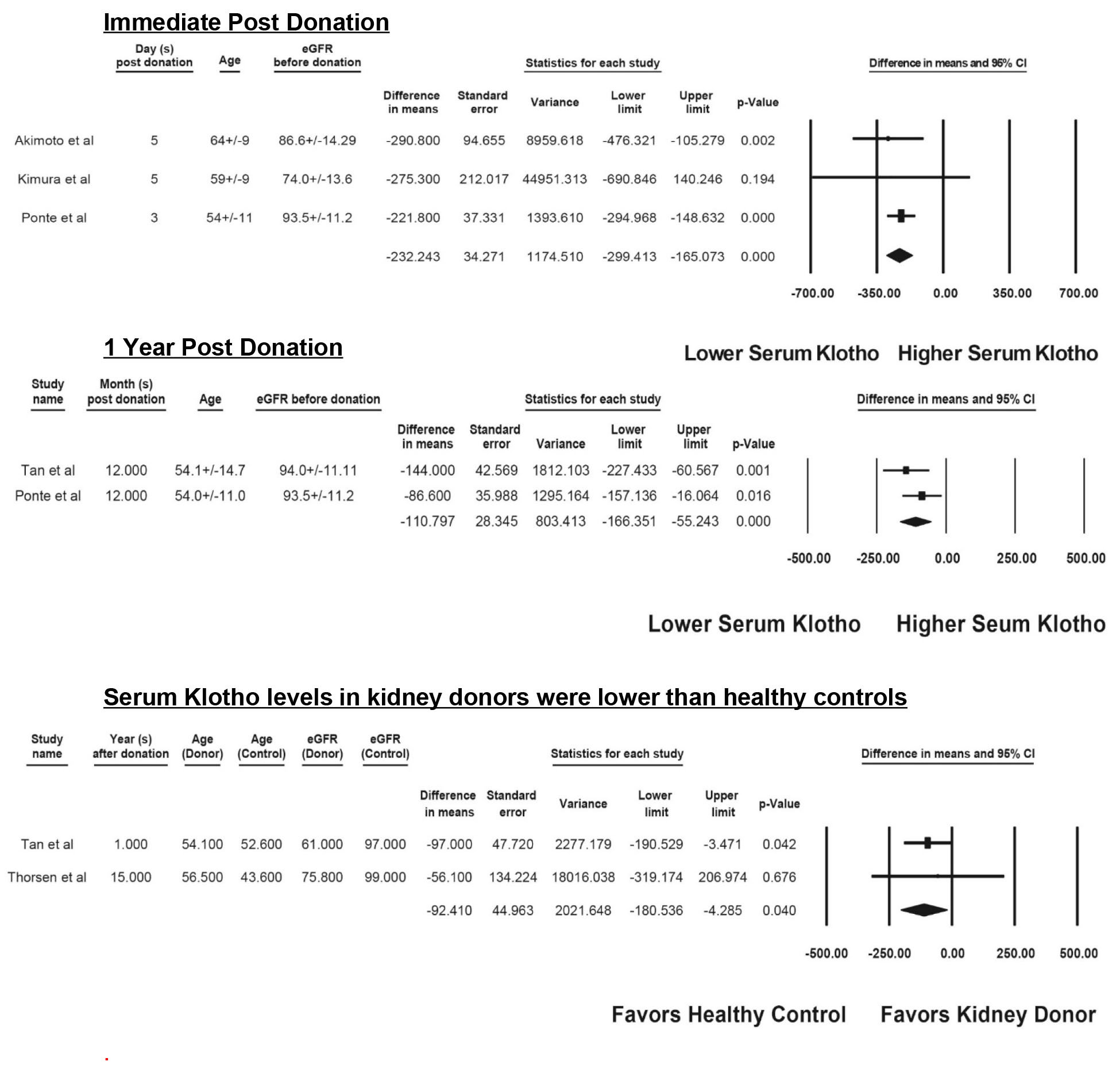Serum αKlotho after Living Kidney Donation: A Systematic Review and Meta-Analysis
1Nephrology, University of Mississippi Medical Center, Jackson, MS, 2Nephrology and Hypertension, Mayo Clinic, Rochester, MN, 3Renal Transplant Program, University of Missouri-Kansas City School of Medicine/Saint Luke's Health System, Kansas City, MO, 4Nephrology and Hypertension, Mayo Clinic, Jacksonville, FL, 5Nephrology, University of Kentucky, Lexington, KY
Meeting: 2020 American Transplant Congress
Abstract number: B-023
Keywords: Age factors, Donation, Kidney, Living donor
Session Information
Session Name: Poster Session B: Kidney Living Donor: Other
Session Type: Poster Session
Date: Saturday, May 30, 2020
Session Time: 3:15pm-4:00pm
 Presentation Time: 3:30pm-4:00pm
Presentation Time: 3:30pm-4:00pm
Location: Virtual
*Purpose: αKlotho (klotho) is a known anti-aging protein that exerts diverse physiological effects. Defect in klotho gene expression in mice can result in a syndrome that resembles human aging. Klotho expression is primarily in the kidney and is significantly decreased in patients with chronic kidney disease. However, changes in serum klotho levels after living kidney donation remain understudied.
*Methods: A literature search was conducted using MEDLINE, EMBASE and Cochrane Database from inception through October 2019 to identify studies evaluating serum klotho levels in living kidney donors. Study results were pooled and analyzed utilizing random-effects model.
*Results: 5 cohort studies with a total of 108 living kidney donors were identified. After kidney donation, there was significant decrease in serum klotho levels post-nephrectomy (day 3 to day 5) with mean difference (MD) of -232.24 pg/ml (3 studies; 95%CI -299.41 to -165.07). At 1 year following kidney donation, serum klotho levels remained lower than baseline before nephrectomy with MD of = -110.80 pg/ml (2 studies; 95%CI -166.35 to -55.24). Compared to healthy volunteers, living kidney donors had lower serum klotho levels with MD of = -92.41 pg/ml (2 studies; 95%CI -180.53 to -4.29).
*Conclusions: There is a significant decrease in serum klotho levels among living kidney donors that starts early after kidney donation and persists up to 1 year. Future studies are required to assess the impact of reduced klotho on clinical outcomes after living donation and identify effective interventions to preserve or replace klotho among living kidney donors.
To cite this abstract in AMA style:
Cheungpasitporn W, Thongprayoon C, Leeaphorn N, Mao MA, Neyra JA. Serum αKlotho after Living Kidney Donation: A Systematic Review and Meta-Analysis [abstract]. Am J Transplant. 2020; 20 (suppl 3). https://atcmeetingabstracts.com/abstract/serum-%ce%b1klotho-after-living-kidney-donation-a-systematic-review-and-meta-analysis/. Accessed December 14, 2025.« Back to 2020 American Transplant Congress

